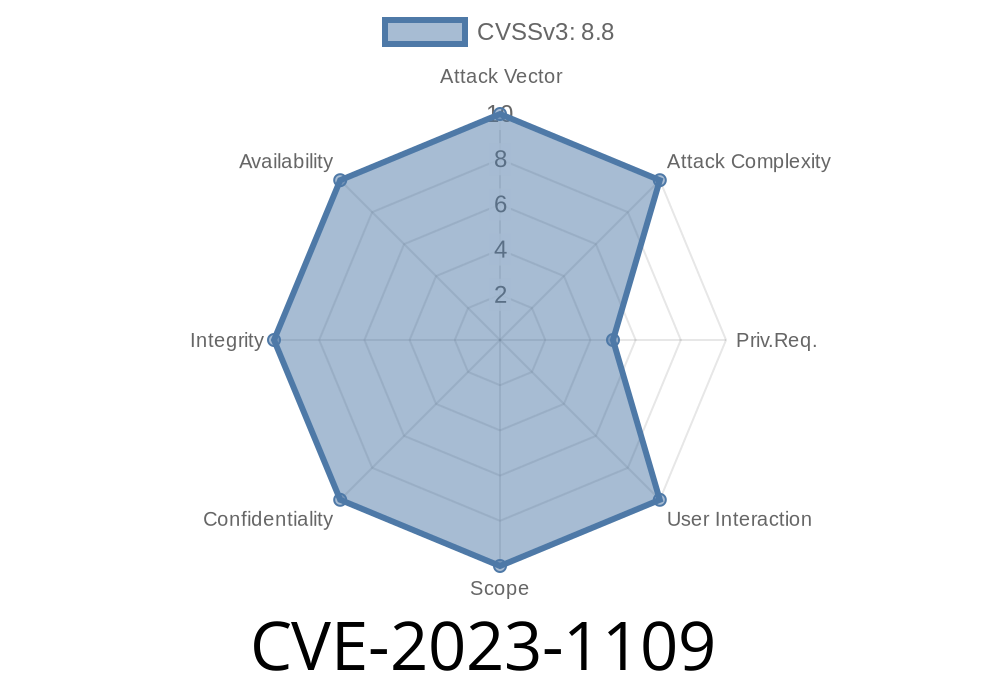The Common Vulnerabilities and Exposures (CVE) system recently identified an exploitable vulnerability in the Phoenix Contacts ENERGY AXC PU Web Service. Through this vulnerability, an attacker can leverage the web service's upload and download functionality to gain full control over it, even with limited access. This article delves into the details of this vulnerability, named CVE-2023-1109, and provides insights into its causes, potential impact, and possible mitigation strategies.
Vulnerability Details
The vulnerability, assigned the identifier CVE-2023-1109, affects the Phoenix Contacts ENERGY AXC PU Web Service. It allows an authenticated but restricted user of the web frontend to access, read, write, and create files throughout the file system by using specially crafted URLs. As a result, the attacker could potentially gain full control over the web service.
Upon careful investigation, the root of the problem lies in the upload and download functionality provided by the web service. These functions do not correctly check and validate user input, which leads to the possibility of malicious users creating URLs capable of bypassing the security measures in place.
Proof of Concept
To demonstrate the vulnerability, let's look at a simple code snippet that can be used to exploit the vulnerability:
import requests
base_url = "https://target.url/";
admin_credentials = ("admin", "password")
target_file = "/path/to/target/file"
upload_url = f"{base_url}upload?file={target_file}"
download_url = f"{base_url}download?file={target_file}"
# Upload a malicious file to the target location
with open("malicious_file.txt", "rb") as f:
requests.post(upload_url, auth=admin_credentials, data=f)
# Download the file from the target location
response = requests.get(download_url, auth=admin_credentials)
# Process the downloaded file and perform malicious tasks
Here, the 'target.url' is the web service's base URL, 'admin' and 'password' are used to authenticate as a restricted user, and 'path/to/target/file' is a file path within the web service's file system.
The vulnerability can be exploited via the 'upload_url' and 'download_url' specially crafted URLs that take advantage of the web service's functionality to manipulate files throughout the file system without proper validation.
References
1. Original post on the vulnerability: https://cve.mitre.org/cgi-bin/cvename.cgi?name=CVE-2023-1109
2. Phoenix Contacts ENERGY AXC PU Web Service documentation: https://www.phoenixcontact.com/online/portal/us
Potential Impact and Mitigation
Exploiting this vulnerability may allow a malicious user to gain full control over the Phoenix Contacts ENERGY AXC PU Web Service, which could lead to severe consequences in affected systems – including unauthorized access to sensitive information, alteration or deletion of data, or even launching other attacks on connected services.
To mitigate the risk, it is recommended that users of the Phoenix Contacts ENERGY AXC PU Web Service promptly apply available patches provided by the vendor. Additionally, strengthening access controls and implementing proper input validation measures within the web service functionality will help prevent attackers from crafting malicious URLs to exploit the vulnerability.
Conclusion
In summary, the CVE-2023-1109 vulnerability represents a significant risk to organizations using Phoenix Contacts ENERGY AXC PU Web Service. By understanding the risks and potential impacts of the vulnerability, and applying the necessary steps to mitigate it, affected organizations can ensure the security and integrity of their systems remain uncompromised.
Timeline
Published on: 04/17/2023 08:15:00 UTC
Last modified on: 04/17/2023 13:12:00 UTC
